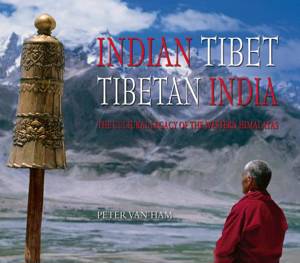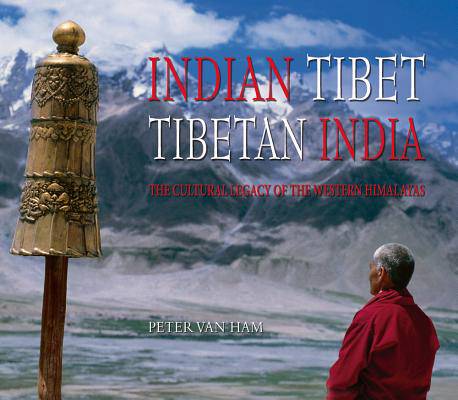
- Afhalen na 1 uur in een winkel met voorraad
- Gratis thuislevering in België vanaf € 30
- Ruim aanbod met 7 miljoen producten
- Afhalen na 1 uur in een winkel met voorraad
- Gratis thuislevering in België vanaf € 30
- Ruim aanbod met 7 miljoen producten
Zoeken
Indian Tibet Tibetan India
The Cultural Legacy of the Western Himalayas
Peter Van Ham
Hardcover | Engels
€ 104,45
+ 208 punten
Omschrijving
Inspired by the first cultural expedition into the Western Himalayas by August Hermann Francke in 1909 which resulted in the region's denomination as Indian Tibet, the author has travelled for years in the long inaccessible Indo-Tibetan border regions after they were opened to the public in the beginning of the 1990s. In secluded and remote high-altitude-valleys of breath-taking grandeur he documented some of the last refuges of Tibetan and early Indian culture and photographed people and the unique testimonies of their art, religion and architecture. With the aid of rare archival and contemporary textual and visual materials, many seen here for the first time ever, the author draws a comprehensive picture of the fascinating history of the exploration of the present Indian border region towards Tibet. Knowledgably he describes the customs of its various inhabitants many of whom still follow their age-old traditions which at present are being stimulated and revived by the many exiled Tibetans that have found a new home in the region, thus designating it as 'Tibetan India.' Contents: Foreword: Variety Endangered-Michel Peissel; Introduction and Acknowledgements Indian Tibet; Tibetan India-Cultural Exchange, Cross-relations and Interactions in the Western Himalayas; The Exploration of the Western Himalayas; Shimla and Kinnaur The Britons and the Fairy Land; Spiti Buddha's Mountain Desert; Lahaul Meeting Place of the Sun and Moon; Western Himalayan Buddhist Art.Influences, Styles, Developments; Zanskar Valley of the White Copper; Rupshu Lakes and Nomads; Ladakh Little Tibet of Passes; Nubra Dunes to Central Asia; Dahhanu Refuge of the Lost Aryans.
Specificaties
Betrokkenen
- Auteur(s):
- Uitgeverij:
Inhoud
- Aantal bladzijden:
- 244
- Taal:
- Engels
Eigenschappen
- Productcode (EAN):
- 9789383098934
- Verschijningsdatum:
- 19/07/2016
- Uitvoering:
- Hardcover
- Formaat:
- Genaaid
- Afmetingen:
- 287 mm x 246 mm
- Gewicht:
- 1519 g

Alleen bij Standaard Boekhandel
+ 208 punten op je klantenkaart van Standaard Boekhandel
Beoordelingen
We publiceren alleen reviews die voldoen aan de voorwaarden voor reviews. Bekijk onze voorwaarden voor reviews.











